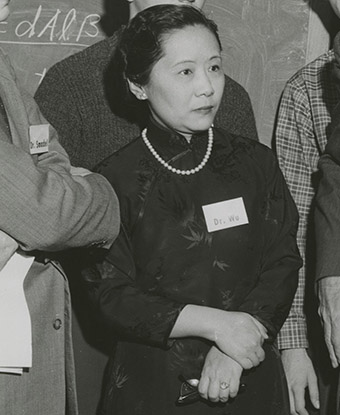Chien-Shiung Wu broke barriers for women in the STEM field. She was the first woman to be involved in numerous areas such as being the first female president of the American Physical Society, first woman (and person) to receive the Wolf Prize in Physics, and many more. Her contributions to physics made groundbreaking and world-changing discoveries. She showcased her perseverance through continuing through and pushing through the sexism and anti-Asian discrimination and continued in the career she was passionate about even after being discredited for her work and being overlooked by the Nobel Prize Committee. She became a role model for women and Asian-Americans in later generations in science and her work is still valuable today as it laid the foundations for modern physics. She challenged the stereotypes people had for women and the Chinese community and she excelled in her work despite all of this.
Her work connects to a broader theme of female Chinese-Americans making contributions to the nation in the World War II period. This time period was a turning point for the Chinese-American community in the United States as it began the unprecedented hiring of Chinese-Americans, specifically the women, outside of Chinatown. Previously, job opportunities were very limited towards them because of racial and gender discrimination. As the nation entered and fought in the war, they needed every one who could work to fill in the unfulfilled positions men in the military left behind. There is an estimate that by 1943, about 5,000 Chinese-Americans were involved in defense-related industries in the Bay Area and between 500-600 were women (the ratio of the genders were mainly due to the Chinese Exclusion Act that was imposed earlier). Many propaganda posters and wartime advertisements show and encourage women to work, however if not all, most of them are depicting white women. This excludes those of color, in this scenario, the Chinese and Asian community for their contributions to helping the nation. This time period was revolutionary for white women but it was even more so for female Chinese-Americans as it was an opportunity for Chinese-Americans to be accepted into the society more than they have before. However, most of the illustrations and propaganda from this time only credits the white women if it even credited women for their work. There is a lot of discrediting involved when talking about the accomplishments of women, especially those facing double discrimination of their race as well, but despite these factors female Asian-Americans were still successful in making valuable contributions to society and making remarkable accomplishments just like Chien-Shiung Wu did.

Lawrence Wilbur, Get a War Job, Advertisement, 1944. Digital Maryland, Accessed April 16 2025

